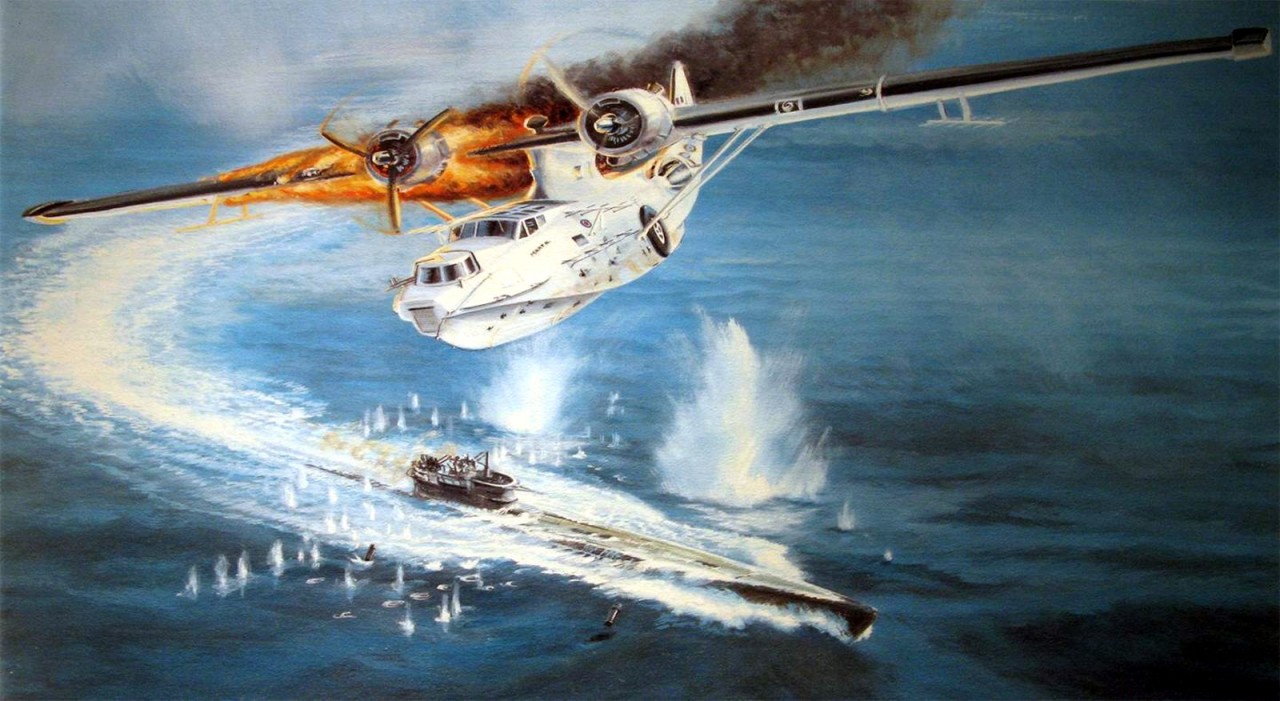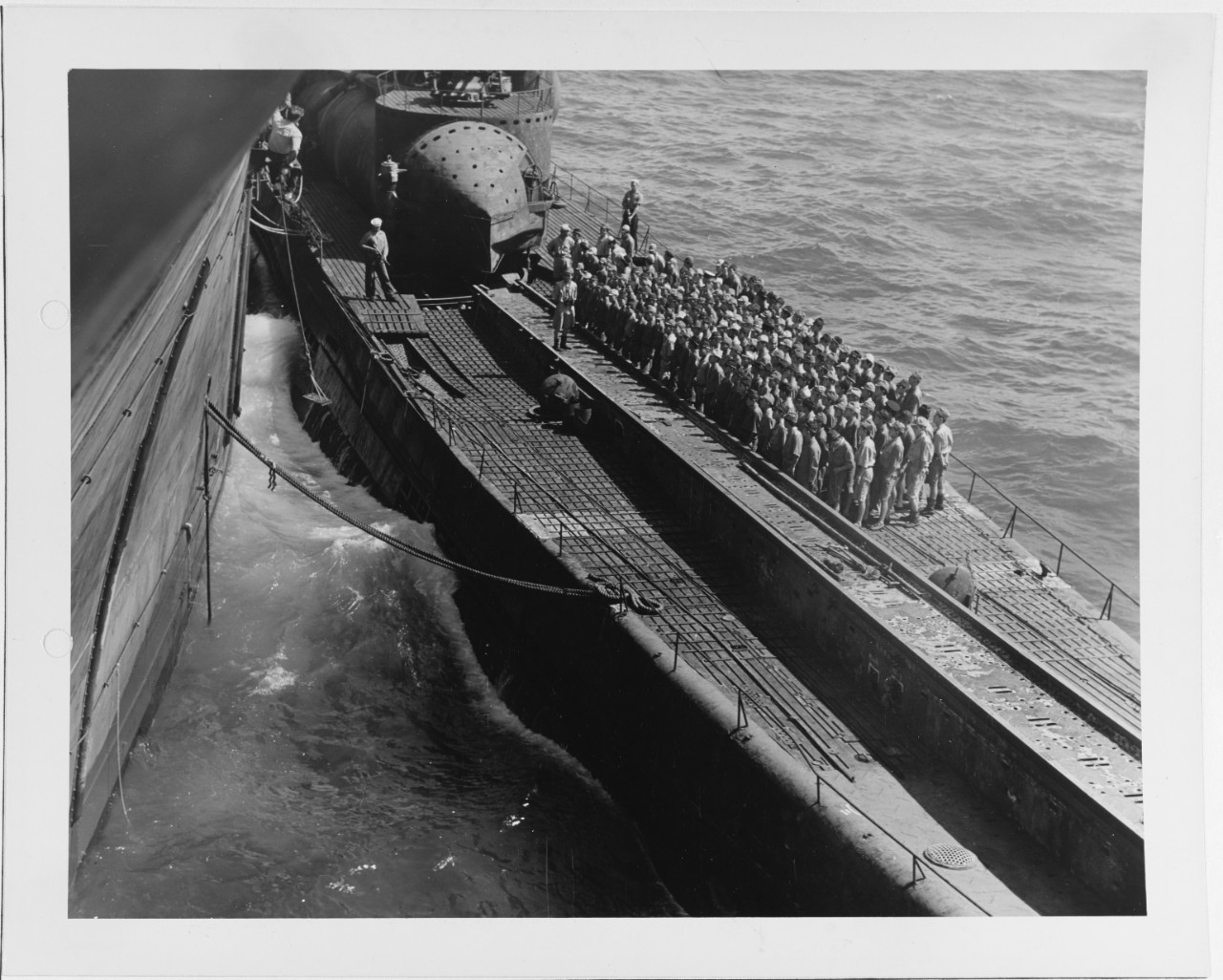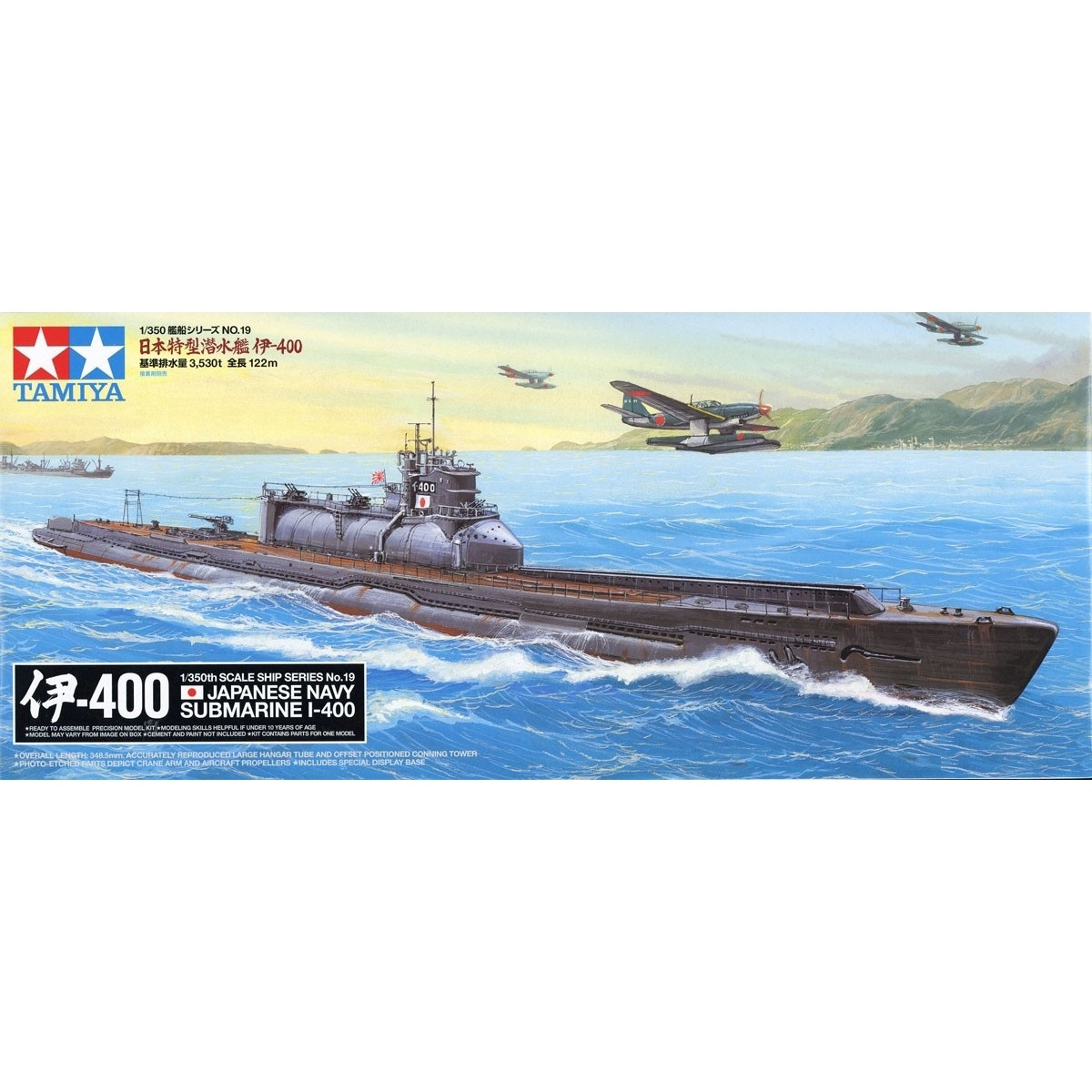Japanese Submarine Aircraft Carrier - What do you get when you mix an aircraft carrier with a submarine? The Japanese Empire decided to answer this question during World War II. Look at I-400.
Did you know that the Japanese built naval aircraft carriers during World War II? That's right, you read it right. If you did, congratulations, you're a military history buff. If not, don't despair, let us introduce you to the I-400 class submarine.
Japanese Submarine Aircraft Carrier

The idea was to provide ships with the ability to attack American shores during the war. They were the brainchild of Admiral Yamamoto, with 18 aircraft planned. The escalation of the war means that the ship is not finished.
Yokosuka E14y Floatplane: Japan's Foldable Submarine Scout
So without further ado, let's jump in and check out this awesome item.
The I-400 was developed by the Imperial Japanese Navy and was the largest submarine of World War II. They held the record until the development of submarine-launched nuclear ballistic missiles during the 1960s. This unique submarine was able to carry three Aichi M6A aircraft. The idea is to start and reset them before they are found.
They are specially designed to travel stealthily to their destination and carry out raids. As they were submarines, they were armed with conventional torpedoes for close sea combat.
The I-400 naval aircraft carrier is also designed to have a greater combat capability and to strike anywhere in the world in principle. During the proposal stage in 1942, plans were made to build 18. Work on the ship began in 1944, but the number was reduced to 5 after Yamamoto's death. Only 3 were completed.
Diymymodei Japanese I 19 Underwater Submarine Aircraft Carrier Diy Handcraft Paper Model Kit Handmadetoy Puzzles Gift Movie Prop
Necessity breeds invention, as the saying goes, and why not try building a seaplane? Sounds like a good question to ask. Shortly after the attack on Pearl Harbor, Yamamoto thought of attacking the US mainland by launching a series of bombing raids. Soon Captain Kameto Kuroshima was assigned to investigate the strategy.
Kuroshima completed his studies in 1942 and was commissioned by the Japanese Navy soon after. His proposal was to build 18 ships that could make three trips to the west coast of America without refueling, or trips anywhere in the world. Not only that, but the ships had to be able to carry at least two attack planes, armed with torpedoes or bombs. The general plan was completed in the same year.
The first came off the production line, Well Dock, in January 1943 and was called the I-400. Four more were planned from April 1943 to February 1944, of which only three were completed. Of these, only two, I-400 and I-401, entered active service.

Each of these impressive machines used four 1,680 kW engines. He even had enough fuel to go around the world one and a half times. It was 120 meters long and displaced about 5,900 tons, twice that of its American counterpart. Their section is a unique figure eight because of the high plane hangar. This provided the necessary strength and stability so that the ship could handle the extra weight of the hangars and not make them too heavy. The aircraft hangar was under the conning tower and was placed amidships.
Japanese Navy Submarine Aircraft Carrier By Jimbowyrick1 On Deviantart
This aircraft hangar is of course watertight and cylindrical in shape. The external access was opened hydraulically from the inside or manually from the outside. There was a 51 mm thick rubber gasket.
Not only was the ship capable of air attack, but it was armed with the largest gun ever found on a submarine. She was armed with three waterproof Type 96 triple mount 25 mm anti-aircraft guns and a single Type 11 140 mm gun behind the hangar! Wow.
The ship, which was a submarine, had 8 torpedo tubes mounted on the bow, no rear tube. This is not good at all.
The plane was placed in the highest plane. Because of their size, the Seiran fighter needed to be designed in a way that would fit well. Taking inspiration from the ability of American naval fighters to fold their fins, the Japanese took it to the next level. Not only the wings can be folded, but the upper part of the vertical tail stabilizer and the entire horizontal stabilizer can also be folded. The specially designed battle pontoons could also be removed and placed in separate compartments on either side of the hangar.
In The 1950s, America Had A Crazy Plan: To Build A Submarine Aircraft Carrier
Fighters were launched from a 26-foot by 26-foot deck, mounted on a compressed air catapult at the bow of the ship. The fighters escaped by means of a collapsing tilting crane. Underneath the rails, four high-pressure air cylinders were connected in parallel to provide enough "thrust" to launch the fighters at high speed.
The rapid deployment of fighters was necessary during the war deployment. As the old WW2 fighters usually took a while to warm up, a specially designed fuel heater was used to bring the engine up to operating temperature quickly. It was also necessary because you can't keep the engine going when submerged, you could kill the crew!
Of the 18 plans, 5 have been established and only 3 have been completed. Of these, they were all seized by the US Navy and sunk by I-400 and I-401 as targets in 1946 or converted into a tanker submarine, I-402. I-402 was scuttled by the US Navy in 1946 at Goto Island.

(AS-22) in November 1945 at Sasebo, Japan. He is accompanied by three large Japanese submarines. They are (from inside to outside): I-401, I-14, and I-400. [Image Source:
Japanese Navy Submarine I400 & I401
So here you are. Technology is great. Do you know about these seaplane carriers or is this news for you? Would the fortunes of Japanese ships have changed if they built 18 of these animals? We can never know.
The Human Genome Project claims to have sequenced the entire human genome, but the full sequence was not released until earlier this year. This article requires additional citations for validation. Please help improve this article by adding quotes from reliable sources. Devices without resources can be challenged and removed. Source found: "Marine Aviation" - Newspapers Books Scholars JSTOR (January 2013)
A naval aircraft carrier is a submarine equipped with aircraft for observation or attack missions. These submarines saw their greatest use during World War II, although their importance was still small. The most famous of these are the Japanese I-400-class submarines and the French Surkauf submarines, although fewer similar ships have been built for the navies of other countries. .
Most operational naval aircraft carriers, with the exception of the I-400 and AM classes, used the aircraft for surveillance and observation. This is in contrast to surface aircraft carriers, whose main function is as a base for attack aircraft.
List Of Submarine Borne Aircraft
Germany was the first country to experiment with naval aircraft carriers, starting with German Navy Commander Oberleutnant zur See Friedrich von Arnold de la Perriere, who commanded a fleet of spy planes. Two Friedrichshauf FF.29s at Zeebrugge. One of the first U-boats to arrive at the Zeebrugge base was Kapitänleutnant Walther Forstmann's SM U-12, which served as a seaplane carrier.
The unarmed FF-29 aircraft was modified to carry 26+ 1/2-pound (12.0 kg) bombs. On December 25, 1915,
One of the newly modified planes flew over the Glish Channel and the River Thames, dropping bombs on the outskirts of London, although it did little damage. The British fighters gave chase but returned safely to camp. In this first bombing mission, it was clear that the aircraft suffered more from a lack of range.

Encouraged by this success, Arnold and Forstmann thought they could extend the range by towing the aircraft off the coast of Great Britain on the deck of a submarine at take-off point, and sends the plane to a part of the water, allowing the sea plane to swim. On January 6, 1915, U-12 launched FF-29 from the yard at Zeebrugge, within the protection of the Zeebrugge Mole. The aircraft was again rammed by the battleship and the submarine left the harbor, apparently smaller than the biplane's 53 ft 2 in (16.21 m) wingspan, which was ⅓ of the 188 ft (57 m) long coastal submarine. U-12 escorted FF-29 for 30 miles before loading the forward tanks and floating the aircraft without difficulty, after which the aircraft took off. Arnold originally planned to meet with the deputy, but decided against it. After gaining ground, Arnold proceeded to the British coast, which apparently drove him away before returning to Zeebrugge. Although the aircraft was brought to sea and safely floated on the deck of the submarine, it was clear that there was a need for improvement in the procedure and repair.
Submarine Aircraft Carrier.
Arnold and Forstmann suggest more uses for the German Navy
Ww2 japanese submarine aircraft carrier, japanese aircraft carrier, japanese aircraft carrier shokaku, japanese aircraft carrier hiryu, future japanese aircraft carrier, japanese aircraft carrier zuikaku, japanese aircraft carrier ryujo, japanese aircraft carrier taiho, japanese aircraft carrier akagi, aircraft carrier submarine, japanese aircraft carrier models, new japanese aircraft carrier
0 Comments